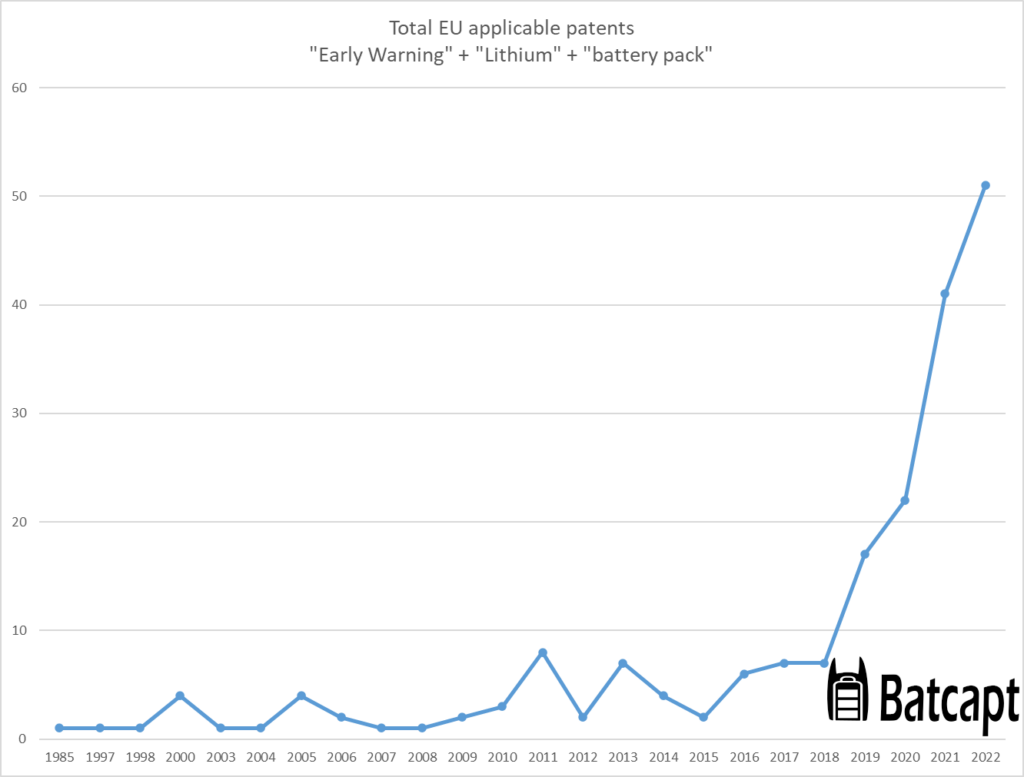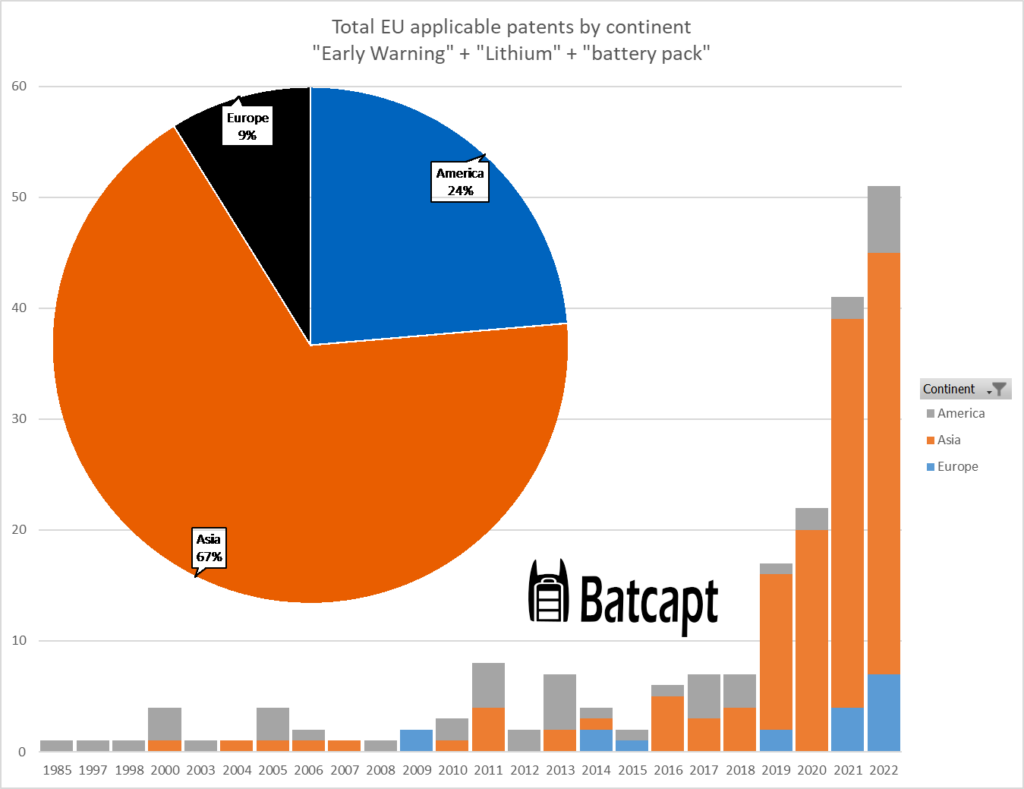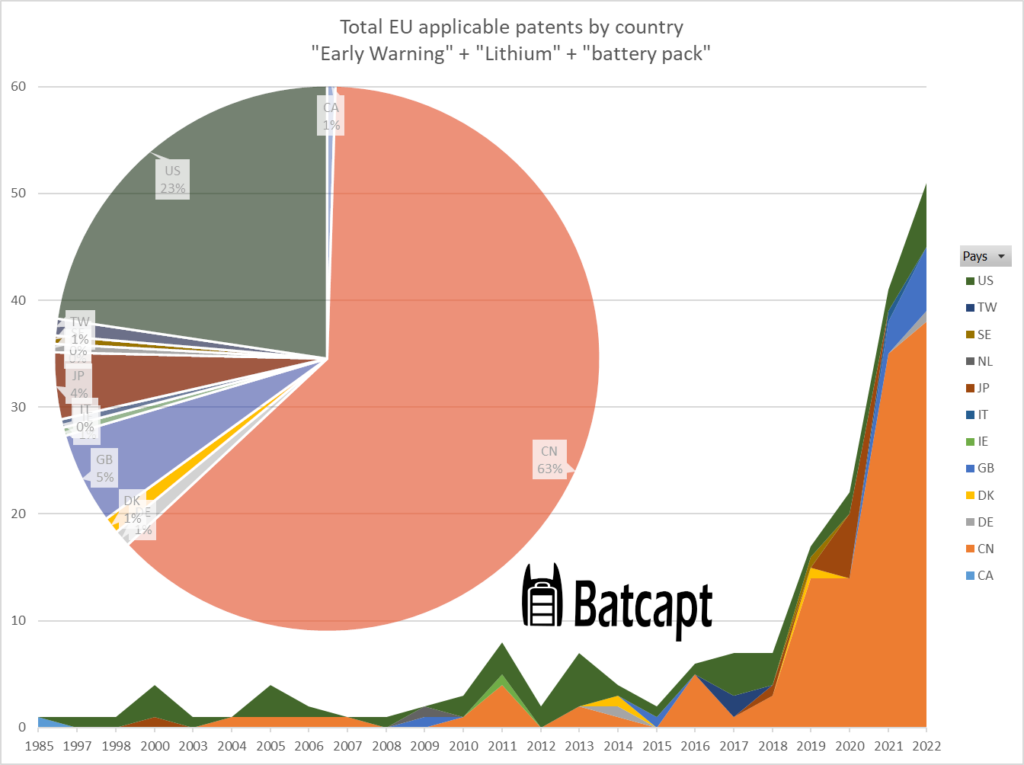The topic of Lithium battery safety concerns us all today. Being a complex subject, it requires research that leads to patents. This article analyzes the status of patents filed on this topic.
Primarily integrating battery cells designed and manufactured in Asia, European companies logically focus on the safety of battery modules and packs.
The Holy Grail of advanced research is being able to detect an anomaly as early as possible that could lead to thermal runaway, in order to contain and address it with minimal resources and costs. This is referred to as early warning.
Here are the results obtained (Espacenet link) regarding active patents in Europe on the terms “early warning” + “lithium” + “battery pack.”
Is there any research topic ?

203 patents are applicable in France for this specific topic. There is a subject
Research and patent filling have quickly increased from 2018.
Which part of the world is working on these safety topics?

67% of the patents are filed by Asian companies. Most notably, only 9% of active patents in Europe are European !
I would like to emphasize that we are discussing patents related to battery packs, which are typically closer to the end-use application.
What is the share of patents originating from China?

2/3 ( 63%) of patents have been filled by chinese companies.
Does this situation only apply to the topic of battery safety?
Referring to the study by KnowMade presented at the Battery Events conference (focused on battery recycling), we see the same pattern of duality (strong Chinese investment and very low European patent investment).
Specifically, in the case of patents related to battery recycling, 72% of delivered patents are issued in China, while only 4% are european.

Conclusion
The topic of “early detection” of incidents related to Lithium batteries has become a research focus since 2018, with a significant increase in patents, the majority of which are Chinese.
Europe is not a major contributor to patents across all fields. However, we are generally quite meticulous about standards and equipment safety. This attention to detail is not reflected in the research conducted in Europe on the topic of early detection.
Yet one of the challenges for the battery industry is balancing the growing demand with the imperative to protect workers and the public from potential hazards.
Will we increase our efforts in the future?